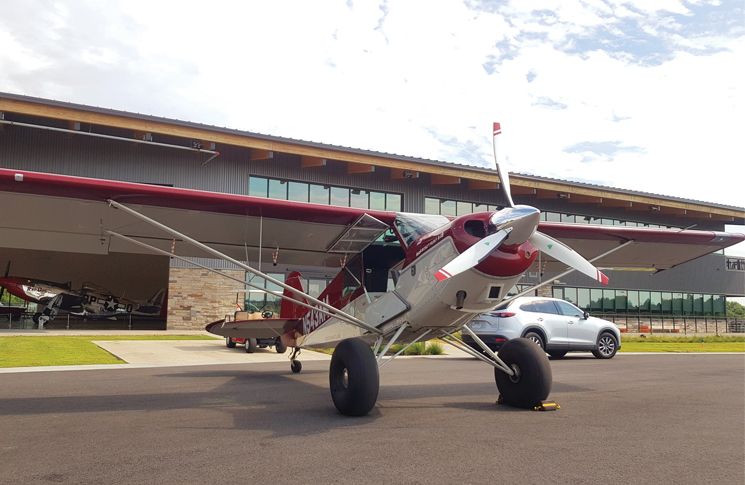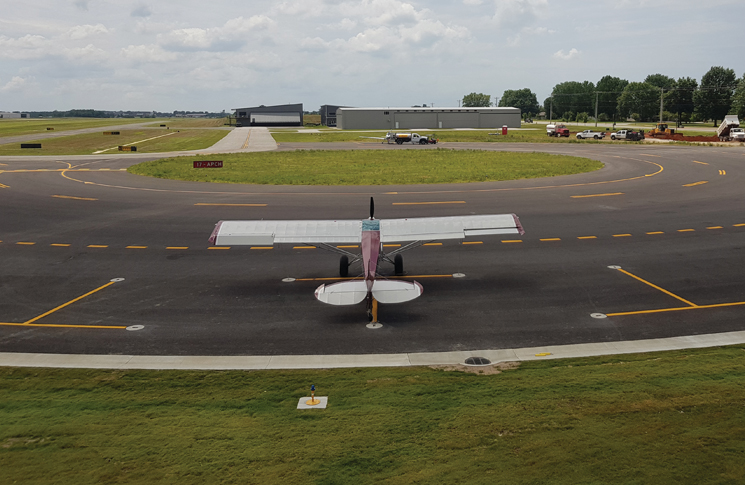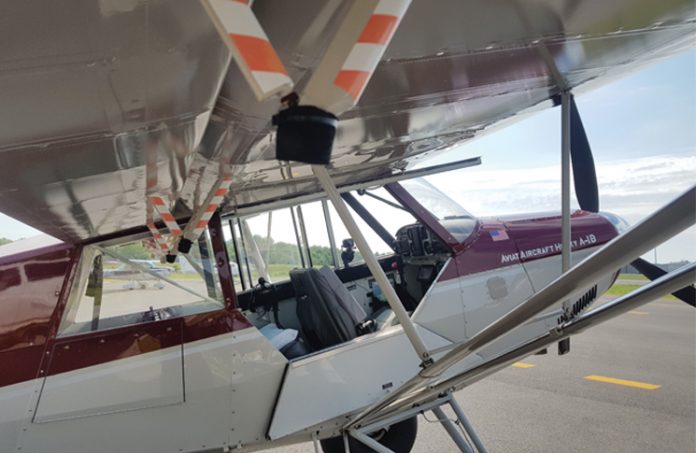By Michelle O’Hare
I have been flying for a few years now; however, it wasn’t until I experienced a partial engine failure in 2019 that I really caught the flying bug.
Having completed most of my flying in a Cessna 172, I decided it was time to try tailwheel flying. I began with some flight training in a Super Legend Cub at Dubbo and then signed up to a bush flying course in an Aviat A-1B Husky in Arkansas, USA. This training really pushed my stick-and-rudder flying skills to the next level. Each day was spent manoeuvring the Husky in the hilly terrain and touching the big bush tyres down on a variety of uneven and short landing areas.
On this particular day the weather was perfect for flying, with CAVOK and wind variable at 5 knots. Having already spent a couple of hours flying that morning, I was taking a break at Bentonville Airport to refuel myself and the aircraft before heading back out to the bush landing areas.
As I climbed upwind, I felt that something was wrong.

Everything started out normal – doesn’t it always? You wouldn’t take-off if it wasn’t. Walk around, pre-flight checks and run-ups were all normal. Surprisingly, even with this good weather, I had the circuit area to myself and so, after a quick radio call, I taxied the Husky onto the start of runway 18 and began the take-off roll. The runway was 4000 feet and sealed, but the aircraft didn’t require anywhere near this much distance. I completed the rolling checks and, with everything still normal, took off and began my climb out.
As I climbed upwind, I felt that something was wrong but the problem wasn’t immediately obvious. There had been no big bang and the propeller was still turning. However, the Husky just wasn’t performing like it had on my previous flights. This climb felt sluggish and my immediate thought was that I was doing something wrong. I ran through the emergency checks but there was no clear cause. I was experiencing a partial engine failure and needed to land!
I looked at the altimeter, it was indicating 600 feet AGL. With this final piece of information, coupled with the fact that the engine was still making some power, I made the decision to turn back to the runway. Before take-off, I had considered the aircraft’s capabilities, weather conditions, other traffic, length of the runway I had taken off from, expected altitude loss and the relatively cleared area at the end of the runway should I come up short.
Until having recently undertaken emergency manoeuvre and aerobatics training where I had practised this exact scenario, I would have never even considered turning back to the runway. I had always been haunted by the accounts of those who had attempted the ‘impossible turn’ only to get too low or slow before making it down safely. Even having practised this scenario, I wasn’t sure if I would be brave enough to make the turn. However, before take-off I had already decided that should my engine fail (or in this case partially fail), my best option at this altitude was to turn back. Landing straight ahead into the mosaic of buildings, fences and powerlines would have created greater risk.
I made a positive left-hand turn, continuously scanning the surrounding terrain for options in case my plan did not work. The whole event only took a few minutes; however, what I found surprising was that I did not feel rushed. With the key decisions already out of the way, I was left with time to focus on actually flying the aircraft. I lined up with the runway and when it was clear I was going to make it down, I lowered the flaps and landed safely.
It was clear that what went wrong was the engine partially failed. However, I was keen to find out why. The aircraft was taken to the maintenance hangar where the inspection revealed a big June bug (similar to a Christmas beetle) had become stuck in the venturi on the carburettor. It is likely it was sucked in through the unfiltered carburettor heat air at some point. There was nothing mechanically wrong with the plane at all – I had literally caught the flying bug!

Lessons learnt:
It takes time to figure out what is wrong. What surprised me most was how quickly I became aware that something was wrong. However, it takes time to figure out exactly what that something is, particularly when the issue is a partial engine failure compared to a complete engine failure which is more obvious.
The importance of preparation and training. Identifying the appropriate response for an engine failure or partial engine failure, takes time. This whole event only took a few minutes and, with so many variables to be considered, these vital decisions need to be undertaken on the ground prior to take-off. Before I taxied onto the runway, I had recited my options and therefore, once I had identified the partial engine failure, I was ready to quickly and positively control the aircraft back to the runway. The skills I had developed during my recent emergency manoeuvre and aerobatics training were incredibly valuable in this situation.
No matter how many checks you do, things can still go wrong. I am a very safety-conscious pilot and double check everything. I had done a complete walk around and pre-flight check, even though I was the last person to fly the aircraft only hours earlier. However, malfunctions can still occur.



Great story and well handled Michelle!
laugh, though i wish it was me, flying the husky through hilly terrain :))
Sparked a bigger picture for me and my flying.
Michelle, good story, well written.
Take off safety is a serious business.
I do not think all pilots are aware of all the options and practice to be considered.
Really insightful. Enjoyed this piece—and seeing how you handled the situation in the moment.